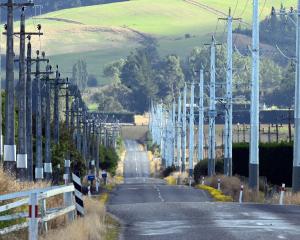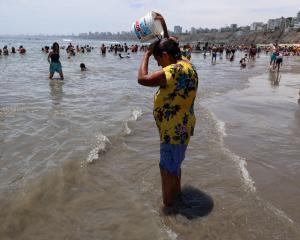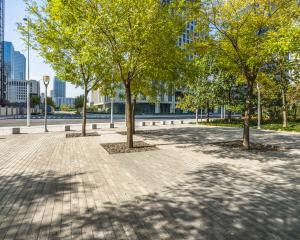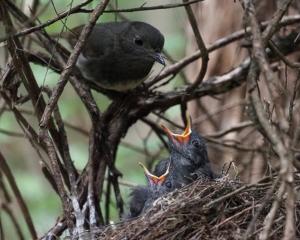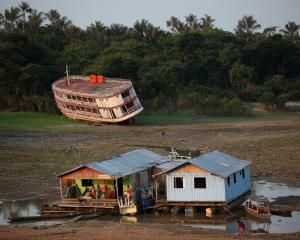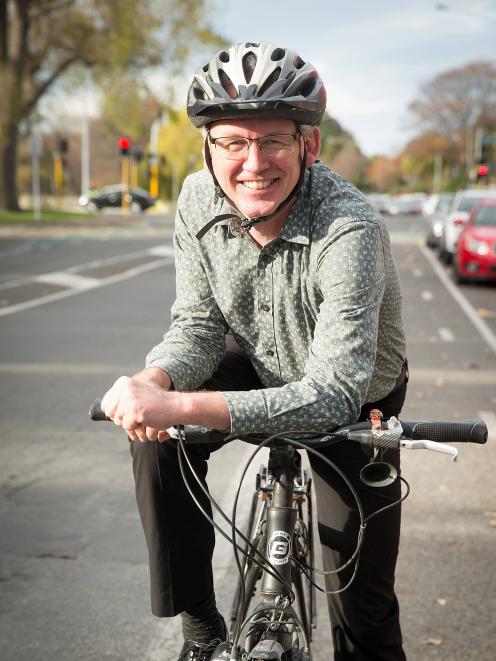
Axel Wilke is loving it.
Wilke, a director and senior transportation engineer at Christchurch company ViaStrada, had a hand in the development of Dunedin's cycleways and says the future is about two wheels.
He walks the talk: or, in his case, rides the lanes, cycling to work each day.
"When the lights are right it is actually six minutes to work, when the lights are not right it is seven," he says with a chuckle.
Wilke is focused on the challenge we face to meet the Paris goal of no more than 1.5degC of warming. To have a 50% chance of success, we need to cut emissions by 45% by 2030.
Wilke agrees we should target transport, but says to date household transport emissions are continuing to rise.
To meet its contribution to the 2030 target, Christchurch would have to reduce the distance driven on its roads by 4.7% each year.
"I think what we need to realise, if we want to have a chance of getting anywhere near those targets, we need to actually not concentrate on making those e-alternatives or public transport more palatable, we need to actually start making driving more expensive," he says.
That means doing things to push people out of fossil-fuelled cars, not just lure them out.
"Otherwise, we just don't have a chance."
Having done that, policymakers would need to be clear about what transport modes will step into the breach.
That's looking much more like e-bikes than e-cars, he says.
"There is a magnitude difference in terms of uptake between electric cars and electric bikes."
Then, having hiked the price of private motoring - by targeting parking prices, for example - you'd reduced speed limits to 30kmh, everywhere except arterials.
"It is by far the most successful road safety measure that you can ask for."
Road crashes dropped by a third in Europe where they did it.
"One of the unintended consequences of doing so is that in lots of areas people just started cycling again," Wilke says.
He does not mention the added health benefits of reducing tailpipe pollution, but others do: about 400 people per year die prematurely as a result of vehicle emissions nationally.
Wilke is also enthusiastic about the contribution public transport can make, and points to Queenstown as showing the way.
On the spot, Queenstown Lakes District Council infrastructure committee chairwoman and regional land transport committee member Alexa Forbes is also happy with bus patronage's trajectory.
But before she talks about buses - and bikes - Forbes wants to talk about land use.
Getting a bit of perspective on land use in Queenstown helped her identify what needed to be done on transport there, she says.
"If you stand at the top of a hill, somewhere where there are not too many wilding pines, so you can actually see down into the town ... you go, `Well, why are you going to try to park a whole lot of cars in there'."
It is a nutty thing to do.
"That town needs to be pedestrianised," she says from her hilltop.

Forbes is also a proponent of the Queenstown Trails Trust, which is working to turn its leisure cycling trails into a workable commuter network, fuelling the uptake of e-bikes. The council is looking at extending that work into purpose-made commuter infrastructure.
These sorts of initiatives might actually provide Queenstown folks with a transport system that is fit for purpose, Forbes says.
What she means by that is a transport service that will meet the needs of an 8-year-old and an 80-year-old. The 8-year-old, of course, does not drive, and the 80-year-old might well be driving less or not at all.
"Get this safe for an 8-year-old to move around without mum or dad and you change everything."
That would resonate with Dr Alex Macmillan, a public health researcher at the University of Otago.
Climate change is a massive opportunity for wellbeing, especially in the transport sector, she says, somewhat counterintuitively.
What she means is that as we tweak our transport modes and systems to bring greenhouse gas emissions down, there is the opportunity to address all sorts of other ills.
Dr Macmillan is part of a project called Future Streets, based in Mangere, Auckland, which has retrofitted infrastructure to make it more conducive to walking and cycling.
It is hoped the initiative might have a positive impact on obesity rates, in a suburb so blighted it has its own dialysis unit.
But it is not just such obvious ills that Future Streets can tackle, Dr Macmillan says.
It is also addressing the loneliness, stress and neighbourhood disconnection that car-based landscapes cause.
So, using $11 million in funding from the New Zealand Transport Agency and Auckland Transport, Dr Macmillan and her team worked with the Mangere community to co-design changes to streets and parks to encourage active transport.
It has already had a positive impact on vehicle speed and traffic volumes. Streets are quieter for walking and biking.
"People feel safer when they are out and about in Mangere and they feel more connected to their neighbours," Macmillan says.
It's a prescription that works.
Comments
"He walks the talk: or, in his case, rides the lanes, cycling to work each day".
In all weathers?, snow, rain etc?, I doubt it.
That's one of the not-often-mentioned advantages of e-bikes. It's much easier to wrap up against the rain and cold, and your ride is so much easier, and you don't sweat under your waterproof layers. So I can't speak for him, but yes, I still bike when its pouring with rain, snowing, or the temperature is hovering near zero.



